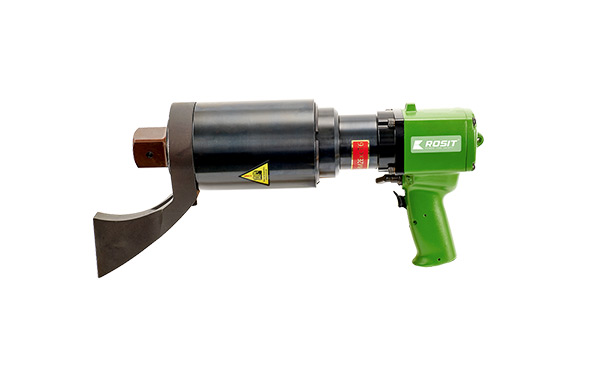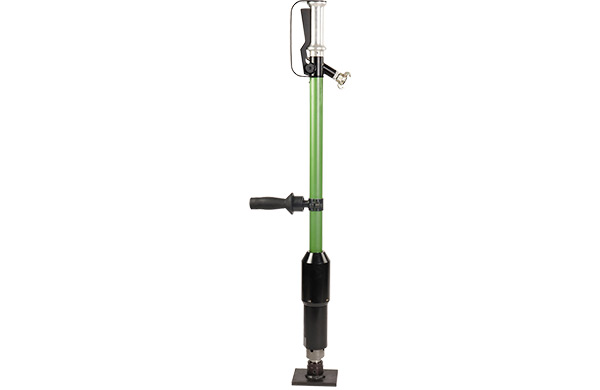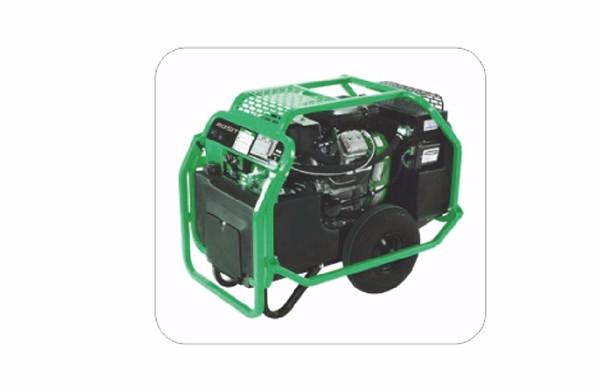- Power Tools
-

Saws
Chain Saw Concrete Chain Saw Band Saw Reciprocating Saw ...
-

Cutters
Pneumatic Cutter Pipe Cutting Machine Nut Cutter
-

Drills
Hammer Drill Pistol Hammer Drill Two Hand Operation Drill Column Drill ...
-

Impact Wrenches
Pneumatic Impact Wrench (Ex-proof Series) Pneumatic Impact Wrench (Ultra light Series) Emulsion Impact Wrench Nut Runner ...
-

Torque Wrenches
Pneumatic Torque Wrench Electric Torque Wrench Hydraulic Torque Wrench Hollow Hydraulic Wrench ...
-

Mining Waterjet Cutting Machine
Electric Mining Waterjet Cutting Machine Pneumatic Mining Waterjet Cutting Machine Emulsion Mining Waterjet Cutting Machine
-

Hammers
Pneumatic Chipping Hammer Hydraulic Chipping Hammer
-

Scaler
Pneumatic Long Reach Scaler
-

Rammer
Pneumatic Rammer
-

Grinders
Wet Grinder Angel Grinder Electric Grinder
-

Fan
Pneumatic Fan Heavy Fixed Fan
-

Hoist
Chain Hoist Electric Hoist Pneumatic Hoist Hydraulic Hoist ...
-

Winch
Pneumatic Winch
-

Pump
Pneumatic Submersible Pump Emulsion Submersible Pump
-

Assembly
Torque Multipler C-Hog Ring Plier
-
- Accessories
-

Cutting
Chainsaw Concrete Chainsaw Band Saw Reciprocating Saw ...
-

Drilling
Impact Drills Light Drills Magnetic Drills丨Rail Drills Balance Drills丨Angle Drills ...
-

Assembly
Impact Wrenches C-Hog Ring Plier
-

Hammer & Shovel
Chipping Hammer Derusting Shovel
-

Grinding
Grinders
-

Hydraulic Accessories
Nut Runner Cutter
-

General Accessories
Waterjet Cutting Machine Filter assy. Filter assy. Water Pump ...
-
- Company Profile
- Service
- News
-

Events
The 21st 2023 Taiyuan Coal (En The 17th Yulin International C The 20th TaiYuan (2021) Coal ( The 16th Ordors International Have a machine repaired or hav ...
-

Case Study
Specifications of adjustable w Have a machine repaired or hav
-

Industry News
Using Chainsaws to Cut Snow? What to do if the pneumatic wr Hydraulic chain saw Operation of the wrench Introduction to the principle ...
-
- Download
- Contact
Overview and production process of melt blown cloth
source:Industry News release time:2021-08-18 Article author:Rosit Popular:Air band saw
Melt-blown nonwovens are mainly used as composite materials, filter materials, insulation materials, sanitary products, oil-absorbing materials and clean cloths (wipes), battery separators, etc., and are widely used in medical and health, automotive industry, filter materials, environmental protection And other fields.
It can be seen that in foreign countries, melt-blown non-woven fabrics are mainly used as two-step SMS materials and medical and health materials and coating materials. In addition, wiping and absorbing materials, filtering and barrier materials are also important uses of melt-blown fabrics. The specifications of meltblown nonwovens for various typical uses are shown in Table 1-8, and the application fields and shares of domestic meltblown nonwovens are shown in the table.
(1) Medical protection
Because the composite material of meltblown cloth and spunbond cloth has high hydrostatic pressure resistance, good air permeability and filtering effect, especially the material composited with membrane, it has good barrier performance and filtering efficiency for non-oily particles It can reach more than 99%.
For example, medical protective clothing made of composite materials with a quantitative specification of 60-100g/㎡d can effectively block microorganisms, particles and fluids, and is very good for SARS viruses (45nm in size) and HIV viruses (90nm in size). The protective effect.
(2) Materials for air filtration
The melt-blown composite material treated by electrostatic electret has low initial resistance, large dust holding capacity and high filtration efficiency when used in air filtration [Under the state of 32L/min flow rate, the filtration efficiency for 0.3um particle size can reach 99.9 %, resistance is only 117.7Pa (12mm water column)] and other characteristics, widely used in electronic manufacturing, food, materials, chemicals, airports, hotels and other places of air purification treatment.
Melt-blown non-woven fabrics are mainly used as composite materials, filter materials, thermal insulation materials, sanitary products, oil-absorbing materials and clean cloths (wiping cloths), battery separators, etc., and are widely used in medical and health, automotive industry, filter materials, and environmental protection. And other fields.
(3) Materials for liquid filtration
Melt-blown non-woven fabric can also be used as a liquid filter material, which can filter particles with a particle size of 0.22~10um. Such as bacteria, blood and macromolecular substances. It is mainly used in the filtration of photosensitive resists in the electronics industry, the filtration of pharmaceutical, biological, and synthetic plasma products in the pharmaceutical industry, the filtration of beverages, beer and Tangjiang in the food industry, the fine filtration of electroplating solutions, the filtration of water purification in water plants, and the purification and filtration of tap water. Click the water hydrogen production device, environmental wastewater filtration, etc.
(4) Thermal insulation materials
Meltblown nonwovens have the characteristics of large specific surface area, small voids, and high porosity. For example, the meltblown nonwoven fiber with an average diameter of 3um [equivalent to an average fiber linear density of 0.0638dtex (fineness of 0.058 denier)] has a variable area of 14617cm2/g, and an average diameter of 15.3um [equivalent to average fiber The specific surface area of the spunbonded nonwoven fiber with a linear density of 1.65dtex (1.5 denier) is only 2883cm2/g.
Since the thermal conductivity of air is much smaller than that of ordinary fibers, the air in the pores of the melt-blown non-woven fabric makes the thermal conductivity smaller, and the heat loss through the fiber material of the melt-blown non-woven fabric is very small, and The still air on the surface of countless ultra-fine fibers prevents heat exchange due to the flow of air, so that it has a good heat insulation and heat preservation effect.
Polypropylene (PP) fiber is the smallest thermal conductivity of existing fiber materials. It is a melt-blown thermal flake made of PP fiber after special treatment [such as adding 35% of high-tech (coarse) PET three-dimensional crimped fiber] , The thermal insulation performance is 1.5 times that of down and 15 times that of ordinary thermal cotton. Especially suitable for making ski suits, mountaineering suits, bedding, sleeping bags, thermal underwear, gloves and shoes, etc. Products with a basis weight of 65~200g/m2 have been used to make warm clothing for soldiers in cold regions.
(5) Oil-absorbing material
Because PP fiber has good hydrophobicity and lipophilicity, low density (0.91g/cm3), low water absorption (0.01%), and moisture regain of 0.05%, it has stable chemical characteristics such as insoluble in oil and acid and alkali resistance. Very good oil-absorbing material. The oil absorption of the meltblown nonwoven fabric produced from PP raw materials is 15-17 times its own weight, and the water absorption is 0.71~1 times its own weight. It has the characteristics of fast oil absorption, long-term floating on the water surface after oil absorption, and reusability. It is currently the most commonly used oil-absorbing material.
Read recommendations:
DM31-030 Hydraulic Magnetic Drill
related articles
Using Chainsaws to Cut Snow?
2024-05-21What to do if the pneumatic wrench is weak
2022-12-19Hydraulic chain saw
2022-12-13Operation of the wrench
2022-12-06Introduction to the principle of pneumatic wrench
2022-11-28How to use the pneumatic wrench
2022-11-21Brief introduction to the principle of pneumatic wrench
2022-11-14Impact pneumatic wrench
2022-11-07Correct hydraulic wrench operation procedure
2022-11-01Hydraulic wrench torque pressure conversion
2022-11-01Field operation procedure of hydraulic wrench
2022-10-24Hydraulic radial plunger motor
2022-10-17The history of hydraulic motors
2022-10-17Principle of balance hydraulic wrench
2022-10-10The Price Factor of Smart Electric Torque Wrench
2022-10-10Introduction to the advantages of using intelligent electric torque wrench
2022-10-10The Price Factor of Smart Electric Torque Wrench
2022-10-10Classification and use of wrenches
2022-10-10hydraulic wrench pressure conversion
2022-10-10Introduction to the advantages of the use of intelligent electric torque wrench
2022-10-10Smart Electric Torque Wrench Selection Guide
2022-10-10Intelligent electric torque wrench for wind power generation
2022-10-09Uses of open-end wrenches.Pneumatic chainsaw
2022-10-08What are the driving parts of a hydraulic wrench and what they do
2022-09-30What are the driving parts of a hydraulic wrench and what they do
2022-09-23the commonly used wrenches
2022-09-22Introduction of several common wrenches
2022-09-21Application scope and daily maintenance method of hydraulic bolt tensioner
2022-09-20Characteristics of hollow hydraulic wrench and precautions for use
2022-09-19Characteristics and precautions of driving hydraulic wrench
2022-09-17Power Tools
AN11-10000 Electric servo CNC Torque Wrench
2023-06-27DM11-032 Electric Magnetic Drill
2023-06-19AN23-1800 Pneumatic Torque Wrench (Angle Shaft)
2024-03-12DC11-400 Electric Core Drill
2023-06-20AN23-2500 Pneumatic Torque Wrench (Angle Shaft)
2024-03-12CC21-530 Pneumatic Light Chainsaw (3.0 kw Series)
2023-06-14LW21-005 Pneumatic Winch
2023-01-06AW21-1200 Pneumatic Impact Wrench (Ex-proof Series)
2021-06-15AN32-23000 Hollow Hydraulic Wrench
2023-06-27CN22-1924 Nut Cutter丨Split-type Nut Cutter
2023-06-17DB21-022 Pneumatic Rotary Drill Heavy Duty
2023-06-19AN32-40000 Hollow Hydraulic Wrench
2023-06-27AW22-6000 Pneumatic Impact Wrench (Ultra-Light Series)
2021-06-15CB61-160丨Emulsion Band Saw
2023-06-17CR21-012 Heavy Pneumatic Reciprocating Saw
2021-06-07CB21-065 Pneumatic Band Saw - Aluminum Alloy Series
2021-06-07AN21-400 Pneumatic Nut Runner
2022-12-20CH31 series Hydraulic Pipe Cutter
2022-12-12AN21-270 Pneumatic Nut Runner
2023-06-21CC20-630 Pneumatic Chainsaw (3.0 kw Series)
2023-06-14CB31-200 Hydraulic Band Saw
2023-06-16GP21-004 Pneumatic Submersible Pump
2022-12-29AN31-100000 Hydraulic Torque Wrench
2023-06-27OW65-020 Split Emulsion Type Mining Waterjet Cutting Machine
2023-05-10LH22-001 Pneumatic Hoist
2021-05-17CS21-180 Pneumatic Handheld Circular Saw
2020-06-13CD22-250 Pneumatic Concrete Chainsaw (5.0KW)
2020-06-13CF21-020 Pneumatic Cutter
2022-12-12AN32-2500 Hollow Hydraulic Wrench
2022-12-27GG11-230 Electric Angle Grinder
2023-06-28Accessories
Tool Bits
2023-06-07Alloy Drill Bits丨811 Series
2023-06-06Carbide Inserts Twist Bits assy.丨DB83 Series
2023-06-07Non-metallic Alloy Saw Blades
2023-06-06Regular Saw Chains丨CC811 Series
2023-06-06Clamps
2023-06-06Carbide Hollow Bits丨DM818 Series
2023-06-06Grinding Disc
2023-06-07Rail Clamps丨CB864-12
2023-06-06Shovel Blades
2023-06-07Guide Bars
2023-06-06Carbide Hollow Rail Drill Bits丨DM822 Series
2023-06-06Carborundum Saw Chains
2023-06-06Oiler
2020-06-13Diamond Saw Chains丨CC813 Series
2023-06-06Carbide Inserts Twist Bits丨DB82 Series
2023-06-06Alloy Saw Blades丨CR812 Series
2023-06-06Pin
2023-06-07Platform Clamps丨CB863-19
2023-06-06Alloy Saw Blades丨CR816 Series
2023-06-06Carborundum saw Blades
2023-06-06Pipe Fixed Clamps丨CB861-12
2023-06-06Alloy Saw Blades
2023-06-06Ex-proof Sleeves KIT
2023-06-07Optional Accessories
2023-06-07Diamond Saw Blades
2023-06-06Alloy Saw Blades丨CR814 Series
2023-06-06Alloy Saw Blades丨CR811 Series
2023-06-06Alloy Twist Drill Bits丨DB81 Series
2023-06-06Alloy Saw Blades丨CR815 Series
2023-06-06

















 You are here: >
You are here: >




